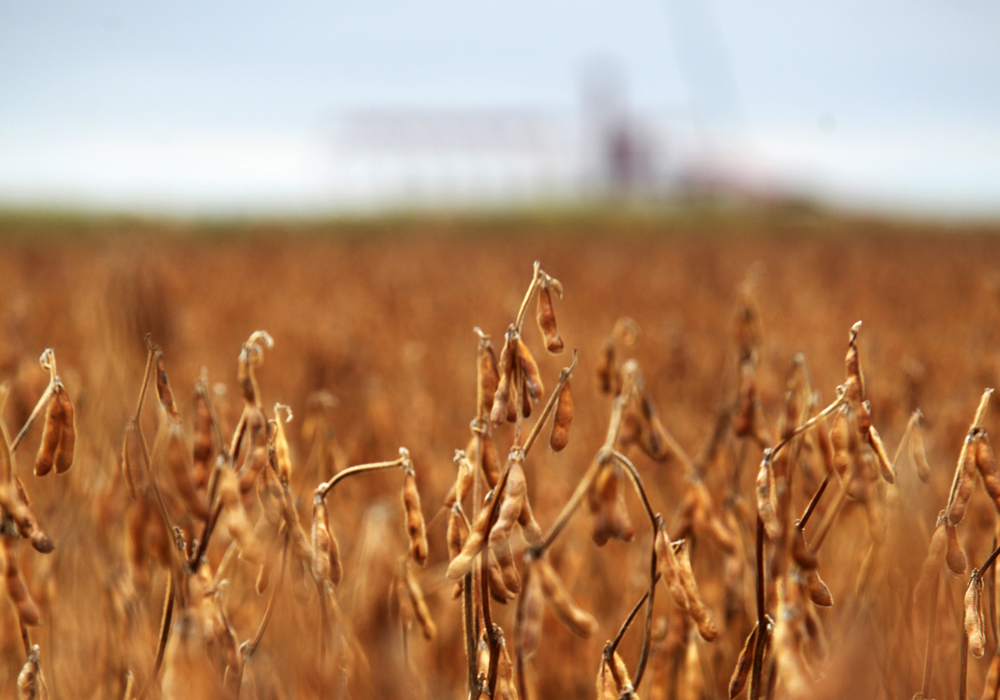The crop is now insurable across the entire province, and coverage is based on a grower’s individual insured history
Province-wide coverage for soybeans highlights the 2020 Saskatchewan crop insurance program announced Feb. 25.
The crop is now being grown throughout the grain belt, although primarily in the black soil zone, said Saskatchewan Crop Insurance Corp. chief executive officer Shawn Jaques.
That has led to making the entire growing region an insurable zone. Coverage is based on a grower’s individual insured history, not the regional average, and experience discounts or surcharges will be applied to the soybean premium.
Soybeans grown under irrigation are also eligible for coverage.
Read Also

Canadian Food Inspection Agency red tape changes a first step: agriculture
Farm groups say they’re happy to see action on Canada’s federal regulatory red tape, but there’s still a lot of streamlining left to be done
Agriculture Minister David Marit said this change highlights the province’s commitment to keeping producers competitive while providing strong business risk management programs.
He said soybeans were first insured in 2010. Varieties have improved and enough customer production information is available to allow the insurance changes.
“When you look globally at the soybean industry and how big it is, I think if we’re going to be competitive globally we have to look at new crop varieties and this is one,” he said.
Saskatchewan Irrigation Projects Association chair Aaron Gray said including soybeans under irrigation coverage is “fantastic.” Soybeans fit well in irrigation rotations, he said.
Overall, premiums and coverage levels are down for this year.
Average premiums are down about 14 percent from $8.61 per acre to $7.40. Coverage is down slightly from $230 per acre to $224. The numbers are based on federal government estimates.
That is still the second-highest coverage level in program history, Marit said.
Another significant change this year applies to previous customers.
“Producers now have up to seven years to rejoin the program to continue with their previous premium discount or surcharge and yields,” Marit said.
Previously, customers had only three years before they had to start over at a zero percent discount, Jaques said.
“When we took a look at this we felt that we were able to extend that period of allowing producers to come back into the program,” he said. “We were confident that their farming practices haven’t changed and so we will allow them to come back and they can be paying their experience discount and the yield that they had when they exited the program.”
Jaques said about 60 producers rejoin each year.
Given the tough conditions of 2019, producers should evaluate all their risk management options, Marit said.
“I am confident in SCIC’s entire suite of business risk management programs,” he said. “This is why there will be no ad hoc programming.”
Other changes for this year include enhancements to the Vegetable Acres Loss Insurance Program to better reflect production costs in insured values, extend the fall cut-off date for harvest, and add asparagus as an eligible crop.
Premiums and coverage for organic growers have been updated, organic insured prices are higher and premium rates are lower. As well, data provided by organic customers was used to establish the rates. Previously, the program relied on a combination of conventional and organic crop experience.
Will Oddie, president of SaskOrganics, said the changes represent a maturation of the industry.
“In the past, in terms of organic yields and pricing it was based on a factor which was largely a guess-timate, you could have said,” Oddie said. “Clearly SCIC has now amassed enough data to form actuarially sound systems based upon the organic data itself.”
Saskatchewan Association of Rural Municipalities director Norm Nordgulen said farmers would be happy with the premium reduction.
“And the coverage of $224 is still pretty reasonable,” he said.
Similarly, Steven Donald from District 1 of the Agricultural Producers Association of Saskatchewan said the organization has asked for better risk management tools and this will be one of those.
Between 75 and 78 percent of Saskatchewan cropland is insured each year through SCIC.
Meanwhile, Marit reminded Saskatchewan cattle producers that calf price insurance is now available until May 28 through the Western Livestock Price Insurance Program. Jaques added that SCIC staff are holding town hall meetings to make producers more aware of the program.
The deadline for SCIC enrolment is March 31.
















